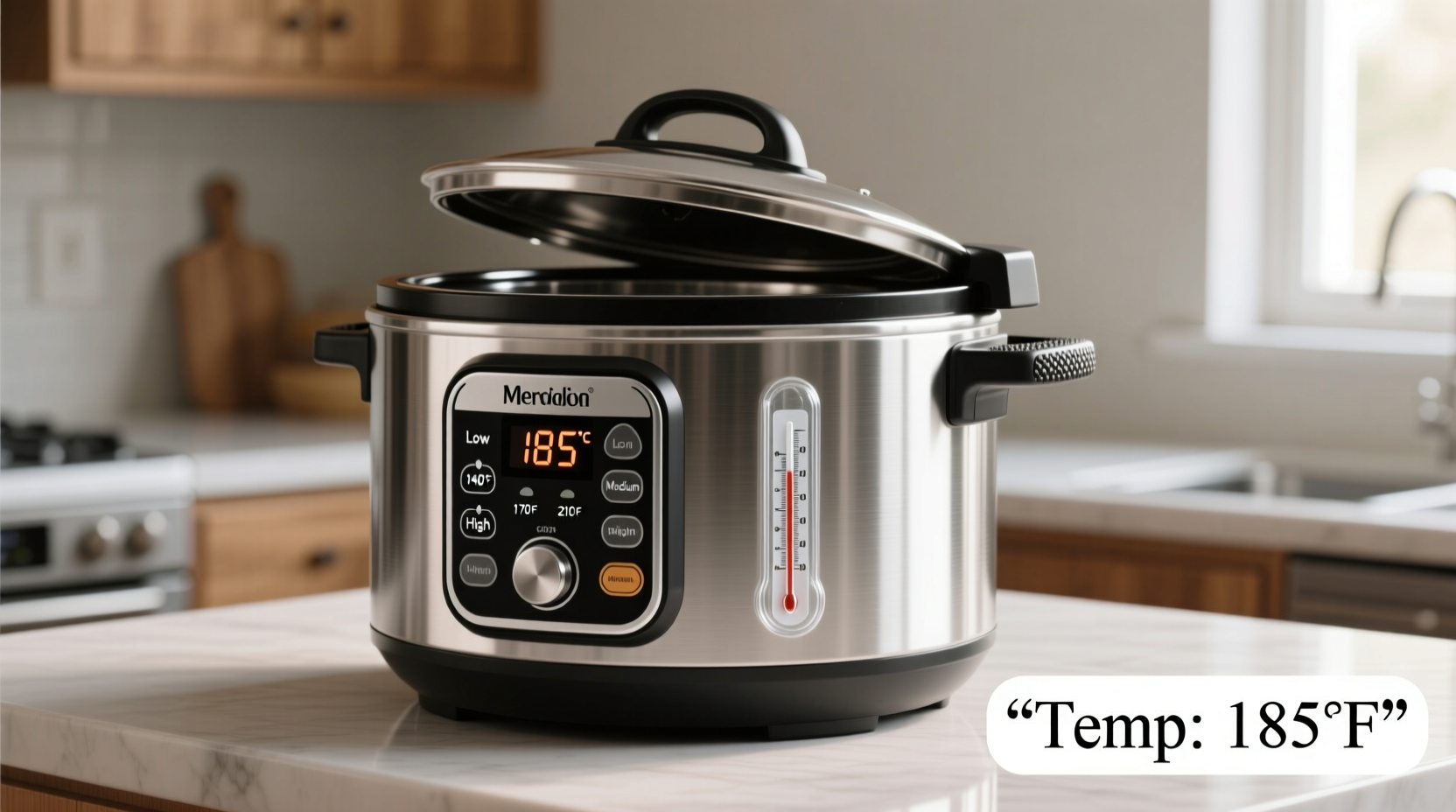The low setting on most slow cookers maintains a consistent temperature between 190°F and 200°F (88°C to 93°C), creating the perfect environment for tenderizing tough cuts of meat and developing complex flavors through extended, gentle cooking. This temperature range safely cooks food while preserving moisture and texture, making it ideal for stews, braises, and dishes requiring 8-10 hours of cooking time.
Understanding your slow cooker's temperature settings isn't just about convenience—it's essential for food safety and achieving restaurant-quality results at home. When you select the low setting, you're activating a carefully calibrated heating element that maintains that critical 190-200°F range, keeping food safely above the USDA's danger zone (40°F-140°F) while transforming inexpensive cuts into succulent masterpieces.
How Slow Cookers Maintain Precise Temperatures
Unlike conventional ovens that fluctuate in temperature, slow cookers use a thermostat-controlled heating element that cycles on and off to maintain consistent heat. The low setting operates at a lower duty cycle than the high setting, meaning the heating element activates for shorter periods, resulting in that crucial 190-200°F range.
According to the USDA Food Safety and Inspection Service, slow cookers must heat food to at least 140°F within the first 4 hours to prevent bacterial growth. Quality slow cookers achieve this while maintaining the gentle cooking environment that makes them so valuable in the kitchen.
Low vs. High vs. Warm: Temperature Comparison
| Setting | Temperature Range | Best For | Cooking Time |
|---|---|---|---|
| Low | 190°F-200°F (88°C-93°C) | Tough cuts of meat, stews, soups | 8-10 hours |
| High | 280°F-300°F (138°C-149°C) | Quick meals, vegetables, reheating | 4-6 hours |
| Warm | 165°F+ (74°C+) | Holding cooked food safely | Up to 4 hours |
This temperature comparison reveals why substituting high for low (or vice versa) often leads to disappointing results. The low setting's gentle heat allows collagen in tough cuts like chuck roast to gradually convert to gelatin without overcooking the exterior.
When to Choose Low Temperature Setting
The low setting shines with these specific applications:
- Tougher meat cuts (chuck roast, brisket, pork shoulder) that need 8+ hours to become fork-tender
- Bean dishes requiring long cooking times to become creamy without disintegrating
- Overnight cooking where you want food ready when you wake up
- Delicate ingredients that might break down at higher temperatures
- Energy efficiency (uses less electricity than high setting)
Food safety expert Dr. Catherine Strohbehn from Iowa State University Extension notes that slow cookers reach temperatures sufficient to destroy harmful bacteria when used properly, but emphasizes the importance of starting with refrigerated ingredients and avoiding overfilling.
Common Low Setting Misconceptions
Many home cooks operate under these incorrect assumptions:
- "Low and high eventually reach the same temperature" – False. While both settings reach simmering temperatures, the high setting gets there faster and maintains slightly higher heat.
- "I can leave food on low indefinitely" – Food should not remain in the danger zone (40°F-140°F) for more than 2 hours. Once cooked, move to warm setting and consume within 4 hours.
- "Low setting is just for convenience" – The temperature difference creates distinct culinary results, not just time variations.
Troubleshooting Temperature Issues
If your slow cooker isn't maintaining proper temperatures:
- Check that the lid fits properly – even small gaps can reduce temperature by 20°F
- Ensure you're not overfilling (fill between ¼ and ¾ full for optimal heat distribution)
- Verify ingredients aren't too cold – refrigerated items extend time to reach safe temperatures
- Use an oven thermometer inside your slow cooker to verify actual temperature
- Replace older models – heating elements degrade over time (typically 5-7 years lifespan)
According to the National Center for Home Food Preservation, slow cookers should heat one quart of water from room temperature to boiling in less than 2 hours to be considered safe for food preparation.

Maximizing Results on Low Setting
Professional chefs achieve superior results by following these techniques:
- Layer ingredients strategically – Place root vegetables at the bottom where heat is most intense
- Minimize lid lifting – Each peek can drop the internal temperature by 10-15°F
- Trim excess fat – Slow cooking renders more fat than high-heat methods
- Add dairy at the end – Dairy products may curdle with prolonged cooking
- Use the right liquid ratio – 1/2 to 1 cup liquid typically suffices for most recipes
Remember that slow cookers work through convection, with heat circulating from the bottom up. This creates a natural temperature gradient, with the bottom being slightly warmer than the top – typically about 10°F difference in a properly functioning unit.











 浙公网安备
33010002000092号
浙公网安备
33010002000092号 浙B2-20120091-4
浙B2-20120091-4